Although all of these digital offerings are a great opportunity to bridge the current social distancing dilemma, it is becoming evident that they cannot replace meeting in person or being in nature in order to experience ourselves, once again, as sentient members of the web of life. Digital events are exhausting since we cannot deeply connect with each other. We can neither smell nor touch the digital landscape. It is hard to grasp how the person vis-á-vis really does feel, to read between the lines of what is said, so that we can react and connect comprehensively. What remains is this sense of how crucial these deep connections with human and nonhuman nature are in order to feel alive.
Maybe this is one of the crucial lessons learnt from the current pandemic we should reflect on: How can we strengthen our urban relational capacity in a world characterized by individualization, digitalization and instrumentalization? How can we also deeply re-connect with each other and with nonhuman nature in cities — in light of the socio-ecological crisis, which will not disappear after COVID-19?
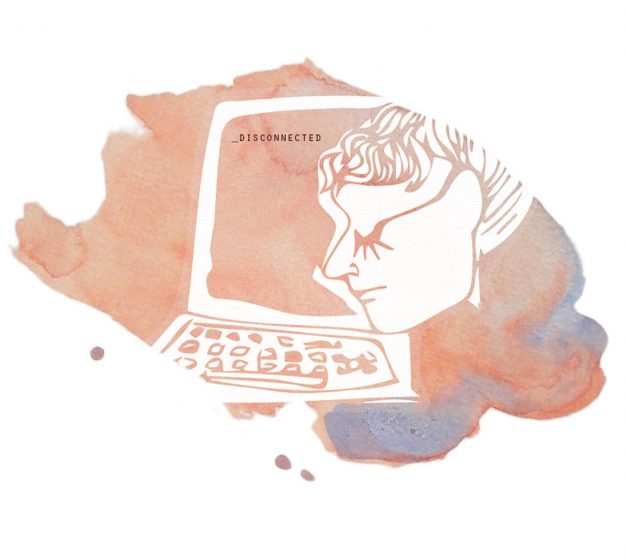
Covid-19 as a symptom of a sick system?
In fact, in light of the socio-ecological crisis it can be argued that this pandemic isn’t happening right now by chance. For instance, during the webinar Earth Talk: Gaia’s Lessons organized by the Schumacher College, parallels between COVID-19 and the anthropocentric destruction of the rainforest were discussed. Rainforests as the lungs of our earth are cleared for humans’ never-ending demand for natural resources and meat. Just recently the WWF warned that Europe is in the second place of the world ranking of tropical forest destroyers behind China, making our imperial way of life visible.
Looking at this sad news through the lens of the Gaia theory, which considers nature as an intelligent self-organizing system, is it only a coincidence that the pandemic attacks humans’ lungs? Can the recent pandemic be interpreted in a way that implies that the corona virus is a wake-up call by nonhuman nature warning humanity to change our way of life, to remind us that we are part of nature and that we are destroying through our exploitation, domination and instrumentalization of nonhuman nature our own basis for life — in material and spiritual terms? Although the developers of the Gaia theory, the chemist James Lovelock and the microbiologist Lynn Margulis, do not consider the Earth to be alive in the same way as humans or other living beings, the theory can be considered a scientifically-based alternative to overcoming the Western human-nature duality by emphasizing the mutual relationship and interconnectedness between humans and the planetary ecosystem. Fostering a responsive relation between human and nonhuman nature in external-material and internal-spiritual terms is also a crucial task for cities, their decision makers and residents.

Reconnecting urban residents to nourishing food
In material terms, it is difficult for the urban population to comprehensively understand and, in particular, to deeply experience multi-scale impacts of our consumptive decisions and routines, such as the destruction of the tropical forests. Most of the inner cities look similar, calling us to buy things — things we usually already have enough of — such as clothes and shoes and when we are hungry from shopping we can consume some hot dogs or sausages. In fact, food is a kind of metaphor for the challenges of human-nature alienation in cities, providing us with a creative and multi-level pathway for how we can achieve more sustainable connections between food and nonhuman nature.
On a material-collective level, issues such as food miles (describing how far food has travelled from its source of production to the consumer) of exotic food or deforestation of the tropical forest for meat production are relevant when exploring responsive human-food connections. That strengthening urban food production can be an effective leverage to foster urban sustainable development and food resilience in times of crisis (also becoming quite relevant during the COVID-19 pandemic, see also this blog-post), is recognized by a range of bottom-up and top-down activities bringing sustainable food consumption to the urban planning and policy table, such as shown through the Edible Cities Network. Edible cities and urban food production can be considered a systemic nature-based solution that addresses a range of challenges connected with urbanization such as fostering biodiversity, social cohesion and green jobs. Overall, bringing food back into cities is not only about strengthening ecologically sound food self-sufficiency, but also cognitively and emotionally reconnecting urban populations with food, thereby fostering pro-environmental food behaviour through an embodied perspective on human–nature connection.

Such an individual-embodied perspective can then also strengthen the establishment of a responsive relationship with food. Thus, we should internalize that food is nourishing us physically and spiritually. We put (more or less) nature-based food products into our body that nourishes us to stay alive. Shouldn´t we then reflect deeply upon what kinds of foods we are supplying our body with so that we can not only survive but feel alive? For instance, how was the food produced — was the vegetable nourished by healthy soils? Do we absorb the suffering of animals with the dead bodies we are consuming? Since cities are usually dependent on food imports outside their boundaries, there is a risk that urban residents are increasingly becoming disconnected from processes related with food production.
Thus, it is worthwhile to contemplate which key processes and situations have the potential to influence urban residents to transition to a plant-based, organic and regional diet, which are crucial pillars for sustainable food consumption. Potentially influential processes could include experiencing meat alternatives through an appealing choice of food in an urban restaurant (in fact, perceived availability of sustainable products is suggested to be crucial for nudging pro-environmental behaviour). For instance, in the cities of Dresden and Nuremberg, where we live, more and more vegan restaurants and coffee shops with delicious meals and cakes are emerging, which offer the opportunity to discover that a plant-based diet is very tasty and does not necessarily mean self-sacrifice. Besides tasting sustainable plant-based food, experiencing vegetable production through the physical engagement of urban gardening, for example, can become a crucially transformative process when we experience how much effort is needed to grow food, thereby motivating us to reduce food waste. Since animal-based food production in particular is usually placed outside the cities, we need to be aware how meat is produced at the expense of animals as sentient beings (see related to this topic this interesting ARTE-documentary (in German)). Thus, the current overconsumption of meat and milk products has crucial negative multi-scale effects on the environment and human health — the Intergovernmental Panel on Climate Change (IPCC) is therefore voting for plant-based diets.
To consume animal-based food is also an ethical and moral issue and it has to be discussed whether causing animal suffering for human desires is immoral. To inform urban residents about what precisely meat consumption entails, from farm to table to consumption, social awareness campaigns about the negative aspects of meat production in urban public spaces such as Anonymous for the Voiceless can be an important pillar for developing empathy regarding animals exploited for food production.
Overcoming the exploitation of non-human nature
In Western culture, from whose viewpoint we write this blog-article, cats and dogs are considered as a valuable part of our family, but when it comes to our daily food habits the brutal way we treat cows, pigs, and poultry so that we can acquire meat and milk-products shows the dark side of modern society and industrialized food production. An example to make the dimension of animal exploitation visible: In Germany, each day about 2 million animals are slaughtered. In contrast, in January 2021, on average 3,500 people died in Germany daily. If each day as many people would die as animals are slaughtered, Germany would have no population anymore in about 42 days. Is this extraordinary extent of killing animals that are subordinated to the will of humans ethically justifiable? Furthermore, is this exploitation of nonhuman nature not a logical explanation for the development of zoonotic pandemics as a response of nonhuman nature to the human caused socio-ecological crisis? In fact, according to a joint report by the United Nations Environment Programme and the International Livestock Research Institute, issues related to human-food connections such as the worldwide increasing demand for animal protein and industrial meat processing must be considered when discussing how we can decrease the risk for future zoonotic diseases such as COVID-19.
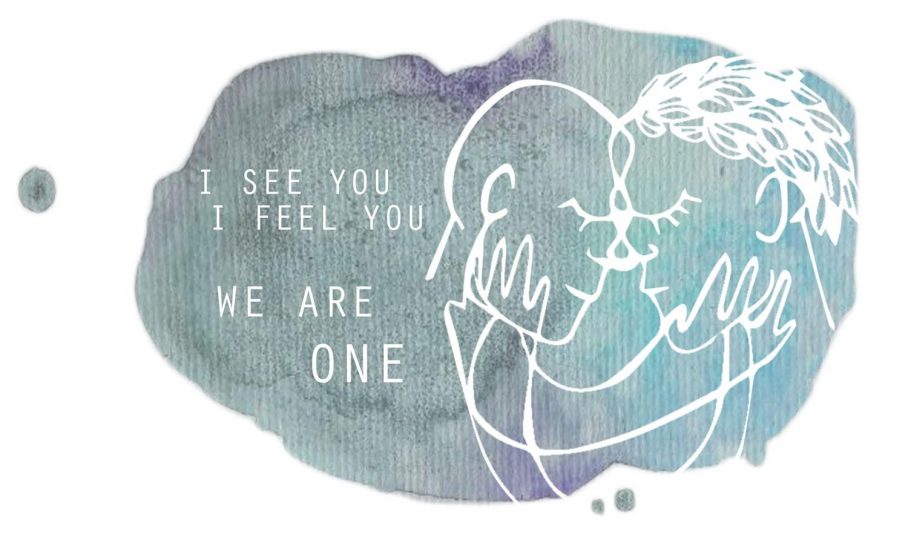
Developing a responsive connection to non-human nature
To explore responsive human-nature relations and the awareness of and empathy for all human and nonhuman members of the web of life, it is worthwhile to learn from indigenous communities and wisdom. The responsive characterization of human and nonhuman nature is interlinked in indigenous communities in the form of kin-centric ecology. In kin-centric ecology, one views oneself and nonhuman nature as members of an extended ecological family connected through spiritual and material life, their common ancestors, souls and the land holding intrinsic value to be respected and protected in the same manner as humans.
In the field of urban ecology, such as also shown in this TNOC-blog, a lot of effort is being made to emphasize the importance of urban nature experience for mental and physical health and psychological resilience, in particular during the COVID-19 pandemic. However, what could a responsive soulful human-nature connection in cities look like? A responsive nature experience does not include visiting urban nature with the intention of instrumentalising nature experiences such as recovering from a stressful day or increasing one´s personal fitness. Neither does it mean to reduce nature experience to an aesthetic quality and its passive “consumption”. When aiming at a responsive nature connection, mindful practices with a focus on listening to nature speak with her own voice is crucial. We personally have the impression that there is recently an increasing demand by urban residents to reawaken place-based spiritual practices and ceremonies to deeply reconnect with our and nonhuman nature’s soul.
For instance, in many German cities shamanic cacao ceremonies are offered. The raw cacao used for such ceremonies should not be mistaken with the industrial processed chocolate found in the supermarket. Raw unprocessed cacao usually tastes bitter and astringent compared to the sweet industrial chocolate processed with sugar and milk. Raw cacao can be considered a master and teacher plant, which was used and valued by indigenous communities for ritual and shamanic purposes, such as for weddings, sacrificial rituals, and currency. Legends of the Maya say that the cacao tree, its plants and seeds come to humans when they treat Mother Earth carelessly to re-establish the lost harmony. Maybe this lost harmony is the reason that a new strand of urban shamanism offers cacao rituals in cities? Mother cacao, which is also called the food of the gods, has with its chemical super food composition the potential to create heart-opening processes and moments of strong bonds. Embedded into an urban circle culture, its ritual use accompanied for instance with meditation or dancing, can offer participants of such rituals answers to specific questions, foster creativity or re-solve deadlocked emotions and patterns. In teachings, such as offered by the Earth School Berlin, urban residents can learn about cacao rituals, shamanic practices, inner and collective transformative capacities to re-establish deep connections with ourselves and the Earth.
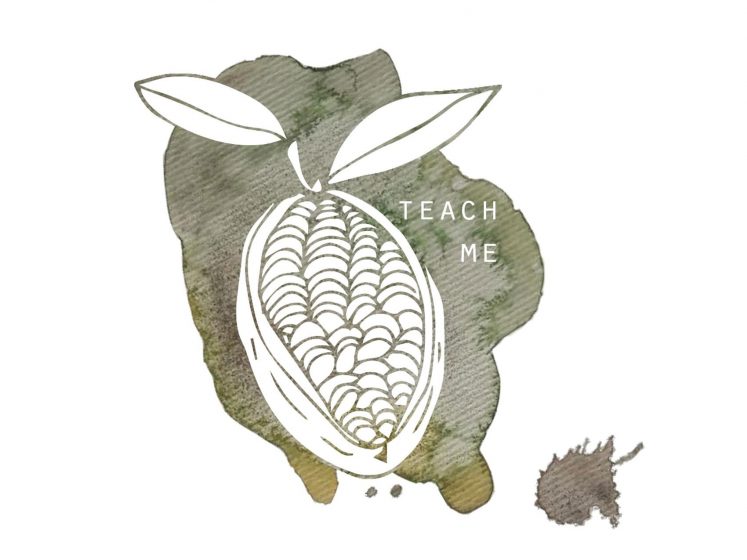
Creating a multi-dimensional space to explore non-duality
Taking into account that the urgency of the present socio-ecological crisis demands to think — or better to feel — outside our rational-centered box, sustainability research on urban socio-ecological systems can take a deeper look at transdisciplinary strategies that strengthen our urban relational capacity for responsive human-nature relations. TNOC and its festival in February this year offered a great space to explore together with academic and non-academic methods how we can deeply experience, learn and feel human and nonhuman nature in material and immaterial spheres such as through poems, journaling or dancing. We were very happy that we got the chance to be part of this family with our session on soul and the city. Together with the session attendees we created a multi-dimensional space to explore the inner and external nature of cities. A crucial focus of the session was a meditation which we developed inspired by the Advaita Vedānta tradition found in Hindu philosophy referring to non-duality.
These are some major excerpts and stations of the meditative journey:
- Point of departure: Think about a place in a city, for instance, a city you are living in, a city in which you had experience that shaped your life, an experience in a city, which touched you significantly. Stick with your first idea, your first feeling, which is popping up inside you without any judging.
- Connecting with the urban environment: Feel inside the place. Maybe you can perceive a special smell, a sound next to your ear. Gradually start to move from the place you are. Slowly walk along the path, perceive how you are synchronically breathing with your steps. Take a look at the urban environment you are walking along, consciously observe how you feel at this place. In front of you there is a bench, slowly walk towards the bench and take a seat.
- Connecting with urban residents: When you sit on the bench, take a closer look at the place that surrounds you. Are there any other people? What do they look like and what are they doing? Do they look relaxed or stressed, are they alone or in groups? Look into their eyes? What do you feel?
- Becoming an urban animal: While you are observing your environment, you´ll see how a bird lands next to you on the bench. The bird is curious and is coming closer to you so you can look each other into your eyes. Maybe the bird would like to share something with you. You´ll start to establish a connection with the bird and then you perceive how you become the bird. It is very normal for you to become a bird, there are no doubt why you should not become a bird. You feel how you can spread your wings, how the wind is carrying you away from the bench, you move your wings up and down synchronically with your breath.
- Connecting with an urban tree: You appreciate that you can effortlessly surf with the wind, you enjoy the silence, being one with the air. Looking down, you see a tree, the tree is a good old friend of yours and you land on your favourite part of the tree. You say hello to your friend, the tree is happy that you came around, so s/he can share some news with you. Just listen to her/his words without any judgement, how is the tree doing?
- Becoming the urban wind: While the tree is chatting with you, you hear the wind touching the leaves from the tree, maybe the wind also brings some special smell to you or a sound. You feel how the wind has the same rhythm as your breath and heartbeat. You feel how you are becoming the wind. You say goodbye to your friend and you are roaming through the city, the streets, the urban nature, and the mystic cemeteries. You feel how you can expand yourself, how you can through your energy connect people, plants, animals, and buildings with each other.
- Becoming one: Dive one more time in the feeling of oneness, allow yourself that this feeling is flowing through your being, let this energy nourish you with whatever you need. Connect again with your breath, slowly come back into your body.

Based on the meditation, we afterwards reflected on the experiences made and discussed ways of soulful relations in cities. The discussions showed that transdisciplinary approaches such as mystical and embodied experiences, journaling, mindfulness practices or storytelling can help to nourish our soul in the city and to experience urban nature as a sentient, soulful member of our kin. Motivated by the supportive feedback after the session, we got inspired to develop further activities for transdisciplinary conferences and festivals dealing with urban human-nature relations and sustainability transformation. For instance, in September this year we will offer a cacao-ceremony at the IOER Annual Conference 2021: Space & Transformation ‒ hopefully taking place in presence.
Martina Artmann and Katharina Artmann
Dresden and Nuremberg
Acknowledgement
Martina’s work is supported by the Leibniz Best Minds Competition, Leibniz-Junior Research Group under Grant J76/2019.

about the writer
Kathi Artmann
Kathi Artmann studied Geography in Austria and design in Germany and today works as a texter, graphic designer, firedancer and hoop-dance-trainer. Her interests lie in processes of alienation and how they endanger coexistence in society. In her artistic works and movement workshops, she tries to encourage people to reconnect with themselves and their environment to visualize and heal alienation.

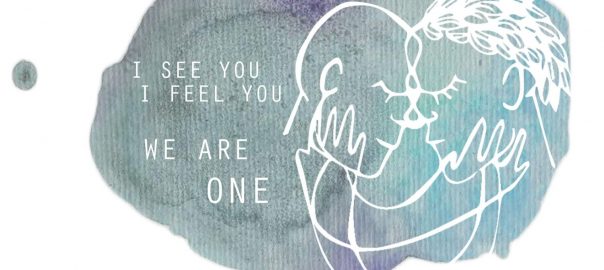






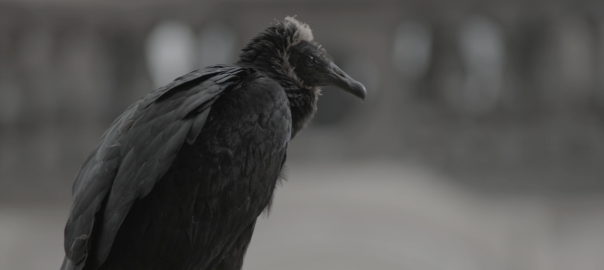
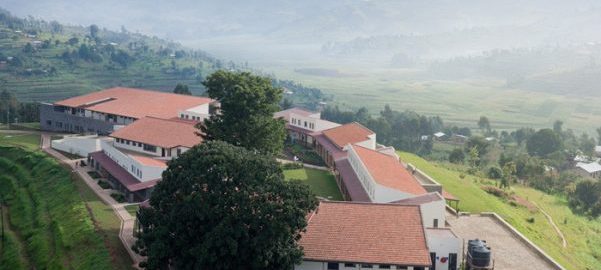
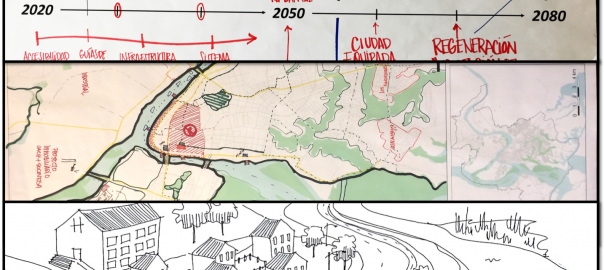
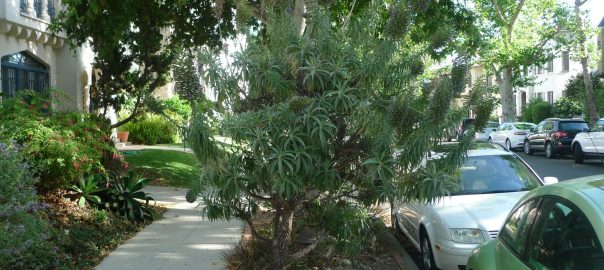
This is a lovely article, Martina. The passages about our kinship with the rest of the living world leads me to want to mention a five volume book series published September 2021, titled Kinship, Belonging in a World of Relations. I t can be found by searching for that title and the “Center for Humans and Nature,” which orchestrated it. The Center also produced a kincentric podcast with To the Best of Our Knowledge, which was titled Kinship With the More-Than Human World. It is also easy to find by searching its title and the podcast name.